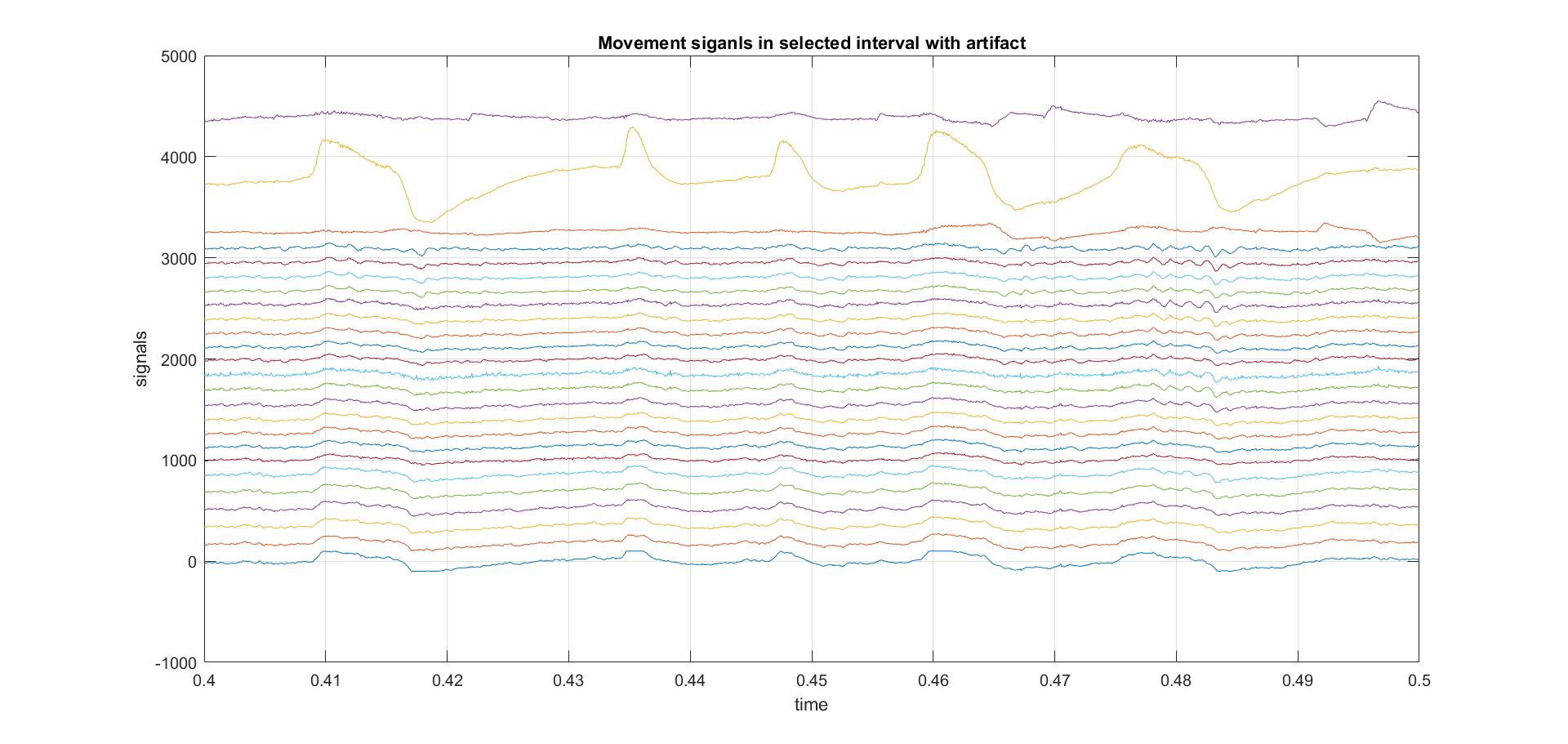This repository belongs to my implementations during my B.Sc. Project. The main title was Applications of Deep Neural Networks in EEG Signal Analysis.
My project was finished in June 2021. Afterwards, I learned much more about deep learning programming. So, the code that I put here is the revised and cleaned version of my original code.
Electroencephalography (EEG) is an electrophysiological monitoring method to record electrical activity on the scalp. As one can guess, the change in brain activity is manifested in EEG signal. The below image shows the EEG signal before and after an epileptic seizure happens in someone's brain.
Epileptic spike and wave discharges [source]The obtained signal usually has an amplitude in
- Epilepsy (like detection and prediction of epileptic seizures)
- Brain-Computer Interfaces (like motor imagery EEG, P300 spellers, etc.)
- Sleep Studies (like classification of sleep stages)
- Monitoring (like emotion recognition, drowsiness and mind wandering detection, etc.)
Signal processing and machine learning methods can help specialists correctly interpret EEG. There are several challenges in EEG processing like non-stationary nature, inter-subject variability, low SNR, etc. In the past years deep neural networks have been exploited to tackle problems in EEG processing. These models have shown better performances than classic EEG analysis methods.
My first task in this project was to do a comprehensive article review on DL-EEG papers published in the past few years. Hence, I reviewed 51 articles in different EEG domains. Several characteristics in were studied in each papers such as application domain, NN structures in the paper, publicity of utilized datasets, etc.
After doing my first task, public datasets and top approaches were identified. The second task was to implement and modify highlighted articles. I decided to work on motor imagery EEG signals because they seemed more challenging and had richer literature compared to other EEG areas.
I did preprocessing steps using numpy and scipy. Deep learning models and their training were implemented using pytorch.
Dataset [bcic]
The dataset we used is BCI Competition IV 2a. This dataset is recorded from 9 subjects while doing 4 different motor imagery tasks. Each subjects data contains two sessions (train and test) which were recorded on two different days. Each session contains 288 4-second motor imagery tasks (except train session of subject 4 that contains 192).
The signals were obtained using 22 Ag/AgCl electrodes for EEG, sampled in
The functions for downloading the dataset, extracting subject data, and doing the preprocessing steps are gathered in datautils.py.
The first step of preprocessing is to remove EOG artifacts. Based on [schlogl], the received signal in each EEG electrode is considered as the sum of real signal and a linear combination of EOG electrodes. The coefficients this linear combinations are calculated for each EEG channel and for each EOG channel. Finally, we have a 66 coefficients that we use for EOG removal. The below equation is used for the process:
$$
b=C_{NN}^{-1}.C_{NY}
$$
where
The following equation is used to remove noise in 4-second MI tasks:
$$
S=Y-N.b
$$
Where
The effect of EOG removal in a selected interval is illustrated in the two following figures. The upper three signals are EOG channels and the others are EEG. As you can see, the effect of EOG peaks in EEG signals is omitted in the second figure.
Bandpass filtering is performed using a sixth order Butterworth bandpass filter with low cut of
Each channel is normalized using its own mean and standard deviation (namely Z-score normalization). This can be done during data extraction using the function mat_extractor in datautils.py.
Since the dataset does not have enough data to train a deep neural network, we crop the signals using sliding windows with specific step and size. The size of the window is 500 samples (2 seconds; like the articles in the literature). Smaller step means more data. We can change our training size by adjusting the step of this sliding window. Two approaches may come up here:
- Crop the signals and make a training dataset before the training process
- This approach may encounter memory problems when setting small steps.
- Crop a batch of signals during each update of the networks parameters.
- This approach fixes the memory problem. However, the same process of batch extraction in every epoch may considerably increase our training time.
Both approaches are implemented and corresponding train functions (train and cropped_train) are in fitting.py.
EEGNet [lawhern]
This model is a compact, yet effective model for classification of BCI signals. Four types of BCI signals were analyzed in the main paper. But we only examined motor imagery EEG.
I the original paper the signals were resampled to
A conceptual illustration of the architecture from the paper is given below:
EEGNet visualizationWe defined DepthwiseConv2D and SeperableConv2D layers using predefined torch layer Conv2D. Additionally, there is a norm constraint on the weights of Conv2D and fully connected layer. So, we defined the layers Conv2dConstrained and LinearConstrained. I learned a lot from examples of braindecode library for this and later models.
Shallow/Deep ConvNet [schir]
These structures are from one of the most inspiring articles in motor imagery EEG domain.
Shallow ConvNet is designed based on the CSP method (the use of log and square as activation functions reflects this fact).
Deep ConvNet is a bigger network with more parameters. Therefore, for better training we need to use a smaller step for out data augmentation.
[bcic] Tangermann et al. (2012), Review of the BCI competition IV, Frontiers in Neuroscience, vol. 6, p. 55
[schlogl] Schlogl et al. (2007), A fully automated correction method of EOG artifacts in EEG recordings, Clinical Neurophysiology, vol. 118, p. 98
[lawhern] Lawhern et al. (2018), EEGNet: A Compact Convolutional Neural Network for EEG-based Brain-Computer Interfaces, Journal of Neural Engineering, vol. 15, p. 13
[schir] Schirrmeister et al. (2017), Deep Learning with Convolutional Neural Networks for EEG Decoding and Visualization, Human Brain Mapping, vol. 38, p. 5391




